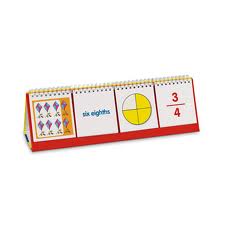Best Strategies for Teaching Math
- Allow students to talk to themselves or others about what they are learning
- Reading a math book section aloud into an audio tape, then listening back to what they read
 |
| Interactive learning with a math CD. |
- Have learning information in the form of a tune and singing it (e.g. teaching CD )
- Use math word associations orally.
- Write down instructions then repeat them orally.
- Give them plenty of opportunity to memorize math names, dates, math vocabulary and math facts.
This is a strong area for the conversational learner.
- Continue to build a rich math vocabulary that relates to functions that are being taught. These learners
collect WORDS. They are sensitive to the meaning, order and the sound of words.
- Conversational Number Learners enjoy public speaking. This can be a strong influence on their mastery
of math when they are retelling and acting out math learning and concepts. Illustrations can be drawn to tell the story for the young or older learner for a more concrete example.
 |
| Public Speaking Award Winners |
Teaching is taking an abstract function and giving it coherence by using vocabulary that students already use. The teacher can verbally explain with words that are preserved on cards ( for referral) and give a real life example demonstration to connect to new learning.
A Real Life Math Experience For The Conversational Learner
Example: Play the "Money Clock". Tell the students that we are going to use a clock to practice money, percents and fractions in wholes, halves and quarters.. We will have a chance to talk to each other while we are learning as soon as we receive our directions. Using a circle, you and the students can label the clock face with the numbers to 12. Then you can label the minutes by quarter hours or by five minute intervals. The goal of the lesson is to look at quarters. If we were thinking about a whole clock without dividing it up, what would it be worth?
Is it a whole or one dollar or less than of a whole? How much is one dollar worth? 100 cents, $1.00
1. First after labeling, draw a line through the middle of the clock, from the 12 to the 6. You may fold your circle in half if it is a loose circle. How much of the clock is each part worth? How many parts do you have? ( two parts, How much is one half of a dollar: how many quarters?
 |
| 4 Quarters |
3. If your circle is loose, tape or glue it down to your journal or another piece of paper. Now we are ready to make a money clock.
 |
| Example of the 1st arc |
5. By now, a student, conversational learner, will want to instruct the next step. Make the next arc to one-half mark at the six. How much of the money clock have we divided? How much is this worth? How many quarters do we have now? The students will label 1/2, 50%, $ .50.
 6. The next arc will go from the six to the nine. and the usual questions are asked. See if the students can label this area alone. how many quarters, 3/4, 75%, $ .75.
6. The next arc will go from the six to the nine. and the usual questions are asked. See if the students can label this area alone. how many quarters, 3/4, 75%, $ .75.7. The last arc will take us back to where we started making a whole. We completed a whole circle and a whole dollar. The students will know what to label. How many fourths? 4/4, 100%, $1.00, 4 quarters.
Ask if they could trade their quarters for another form of money.
This is a great second grade lesson if students are able to work cooperatively and discuss what is happening. You are using math vocabulary and allowing verbal interaction that will strengthen the lesson for the linguistic/logical/interpersonal/visual/hands on/and even the intrapersonal learner, who will continue on his own to complete the task.











No comments:
Post a Comment